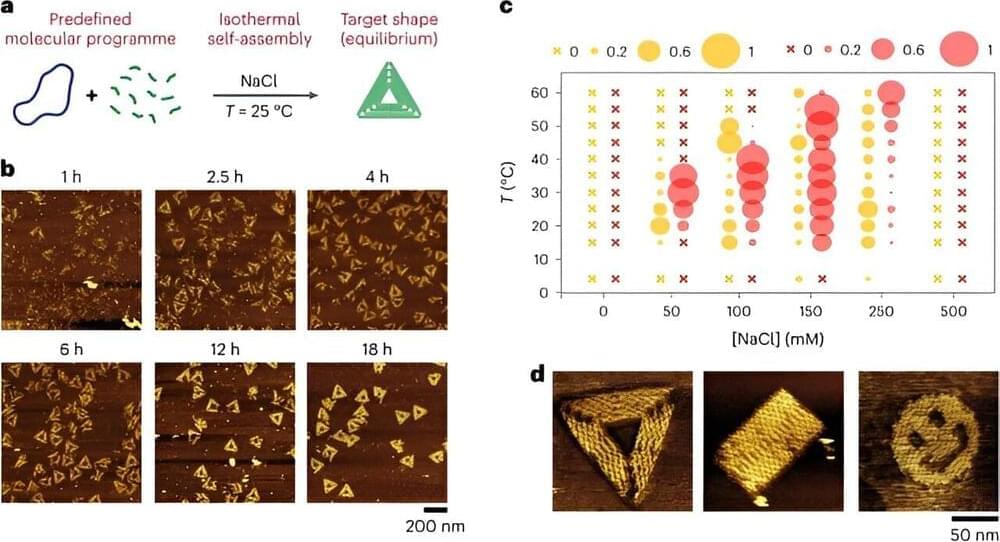Multiple complementary DNA strands can be thermally annealed into desired entities to engineer DNA nanostructures. In a new study now published in Nature Nanotechnology, Caroline Rossi-Gendron and a team of researchers in chemistry, materials science and biology in France and Japan used a magnesium-free buffer containing sodium chloride, complex cocktails of DNA strands and proteins to self-assemble isothermally at room temperature or physiological temperature into user-defined nanostructures including nanogrids, DNA origami and single-stranded tile assemblies.
This self-assembly relied on thermodynamics, proceeding through multiple folding pathways to create highly configurable nanostructures. The method allowed the self-selection of the most stable shape in a large pool of competitive DNA strands. Interestingly, DNA origami can shift isothermally from an initially stable shape to a radically different one through an exchange of constitutive staple strands. This expanded the collection of shapes and functions obtained via isothermal self-assembly to create the foundation for adaptive nanomachines and facilitate evolutionary nanostructure discovery.
Self-assembly occurs when naturally occurring or rationally designed entities can embed necessary information to spontaneously interact and self-organize into functional superstructures of interest. Typically, synthetic self-assembled materials result from the organization of a repeating single component to create a stable supramolecular assembly containing micelles or colloidal crystals with a prescribed set of useful properties. Such constructs have limited reconfigurability, making it highly challenging to produce the desired structures.
